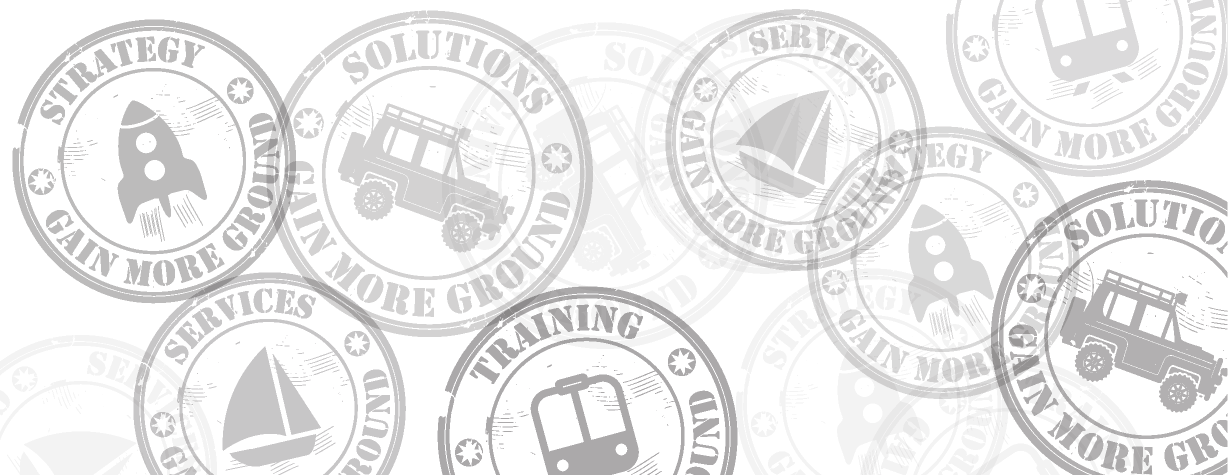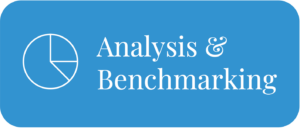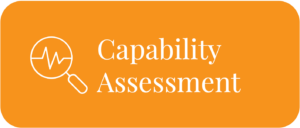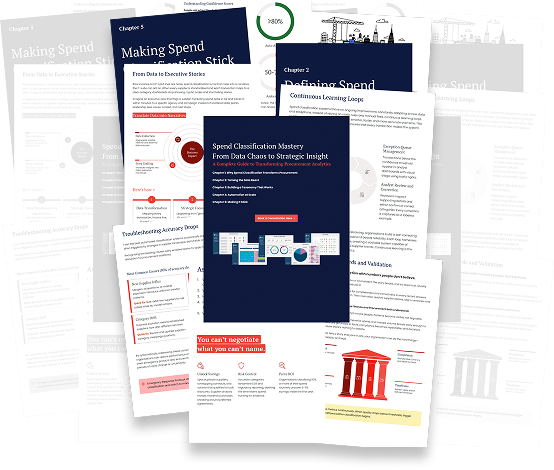In the previous article we explored the strategic opportunity of agentic AI in procurement, the potential for value creation, autonomous negotiations, and freeing up your team to focus on relationships and strategy instead of chasing purchase orders.
But here’s where most implementations go wrong. Organisations get excited about the vision, rush into deployment, and discover too late that autonomous AI making procurement decisions creates risks they never considered.”
Algorithmic bias. Accountability gaps. Vendor manipulation. Regulatory compliance nightmares.
Algorithmic bias. Accountability gaps. Vendor manipulation. Regulatory compliance nightmares.
The difference between successful agentic AI deployment and expensive disappointment comes down to understanding risks and limitations.
Let’s address the elephant in the room, autonomous AI making significant procurement decisions requires bulletproof governance frameworks that most organisations aren’t prepared for.
Navigating the Challenges: What CPOs Must Consider
Governance and Risk Management
The risks are substantial and the consequences of getting this wrong can be career-ending.
Algorithmic bias represents one of the most dangerous hidden risks. AI systems can perpetuate or amplify existing biases in your procurement data, systematically favouring certain suppliers based on historical patterns rather than current capabilities.
This becomes particularly problematic when bias affects diversity and inclusion initiatives, potentially excluding minority-owned businesses or creating legal liability under equal opportunity regulations.
Regulatory compliance challenges multiply exponentially with government contracts and heavily regulated industries. When an AI agent makes an autonomous procurement decision that violates public sector procurement rules or industry-specific regulations, the accountability question becomes: who goes to jail? The AI system can’t take responsibility, and “the algorithm did it” won’t hold up in court or regulatory hearings.
Vendor manipulation of AI systems presents an emerging threat that few organisations are prepared for. Sophisticated suppliers are already learning how to game AI-powered procurement systems, optimising their proposals to trigger favourable algorithmic responses rather than delivering genuine value. This creates an arms race where your AI needs constant updates to stay ahead of vendor gaming strategies.
Accountability gaps create the biggest governance headache. When autonomous decisions fail, and they will, you need crystal-clear frameworks defining who’s responsible for what outcomes.
If your AI agent selects a supplier that subsequently fails to deliver, causing business disruption and financial losses, your board won’t accept “the AI made that decision” as an adequate explanation.
Audit trail requirements become exponentially more complex with autonomous systems. You need not just records of what decisions were made, but detailed logs of the reasoning process, data sources considered, alternative options evaluated, and confidence levels assigned. This documentation must be comprehensive enough to satisfy both internal audits and external regulatory scrutiny.
Here’s something many CPOs overlook: vendor due diligence now includes assessing suppliers’ AI capabilities and risks. If your key suppliers are using AI for pricing or capacity planning, you need to understand their systems’ reliability, bias potential, and failure modes. Their AI decisions directly impact your supply security and cost structure.
Organisational Readiness
The cultural transformation from “AI assistance” to “AI autonomy” represents the biggest implementation challenge. Your team needs to shift from controlling every decision to setting strategic parameters and monitoring outcomes. This requires tremendous trust in both the technology and the governance frameworks you’ve established.
Skills development focuses on orchestration rather than operation.
Your procurement professionals don’t need to become data scientists, but they do need to understand how to set objectives for AI agents, interpret autonomous decision outputs, and intervene when situations require human judgment. Training programs should emphasise strategic thinking, relationship management, and AI governance rather than technical AI operation.
Resistance management demands honest conversations about job displacement and control. Address these fears directly, autonomous AI changes roles but doesn’t eliminate the need for skilled procurement professionals. People concern about losing control are valid; the solution is transparent governance and clear escalation protocols, not dismissing these worries.
Skills gap analysis can help identify specific training needs and development paths, ensuring your team feels prepared for the transformation rather than threatened by it.
Limitations and Realistic Expectations for Procurement Agentic AI
Before you start planning your autonomous procurement transformation, let’s talk about where agentic AI works well, and where it doesn’t. Understanding these limitations will save you from expensive disappointments and help you target your efforts where they’ll actually deliver value.
Where Autonomous AI Excels (and Where It Doesn’t)
Agentic AI works brilliantly for standardised categories, office supplies, maintenance items, routine services with clear specifications. These purchases have predictable patterns, established supplier bases, and well-defined success metrics. Your AI agent can handle tail spend negotiations, routine reorders, and commodity sourcing with impressive results.
Strategic purchases remain firmly in human territory. When you’re selecting technology platforms that will define your business capabilities for the next five years, or negotiating partnerships that involve joint product development, no AI system can replace human judgment about strategic fit, cultural alignment, and long-term relationship potential. The nuanced understanding required for these decisions involves context that current AI simply cannot fully grasp.
Human Oversight Remains Critical
High-value decisions demand human involvement, regardless of category standardisation. Most organisations set monetary thresholds or ‘designations’ beyond which human approval is mandatory. This isn’t just about risk management; it’s about ensuring that significant financial commitments align with broader business strategy and stakeholder expectations.
Complex supplier relationships require human oversight even for routine transactions. If a supplier represents 20% of your total spend or is critical to your production line, autonomous decisions affecting that relationship need human review. AI agents excel at processing information, but they can’t assess relationship dynamics or political sensitivities that might affect long-term partnerships.
The question isn’t whether AI can make better decisions than humans. It’s whether humans can make better decisions about when to let AI decide.
Technology Limitations You Need to Understand
Current AI systems struggle with nuanced business contexts that humans take for granted. An AI agent might identify the lowest-cost supplier without understanding that this vendor has a history of delivery issues during peak seasons, or that selecting them would create unhealthy supplier concentration in a critical category.
Regulatory and compliance complexity often exceeds AI capabilities, particularly in government contracting or highly regulated industries. While AI can flag obvious compliance issues, the subtle interpretation of regulatory requirements, especially when regulations conflict or change, requires human expertise that current systems cannot replicate.
Industry Constraints That Limit Deployment
Government procurement operates under strict regulatory frameworks that may prohibit autonomous decision-making above certain thresholds. Public sector organisations often require human oversight for transparency and accountability reasons that go beyond operational efficiency.
Healthcare and pharmaceutical procurement involves patient safety considerations that make autonomous decisions inappropriate for many categories. Similarly, defence contracting has security clearance and national security implications that require human judgment.
Financial services procurement faces regulatory scrutiny that demands explainable decision-making processes. While AI can support these processes, autonomous deployment may conflict with regulatory expectations about human oversight and accountability.
The bottom line: agentic AI is a powerful tool that excels in specific circumstances. Success comes from understanding where it adds value and where human judgment remains irreplaceable, then designing your implementation accordingly.
Conclusion
The agentic AI revolution in procurement isn’t coming, it’s here, though still in its early stages. While you’ve been reading this article, AI agents somewhere are beginning to negotiate contracts, optimise supplier relationships, and identify cost-saving opportunities that human teams would miss, though full autonomous deployment remains limited to pioneering organisations.
The competitive advantage window remains open, but it’s closing rapidly.
Your next 90 days are critical.
Start with a procurement maturity assessment … you can’t deploy autonomous systems on weak foundations. Identify your highest-impact, lowest-complexity use cases for quick wins.
Most importantly, begin the cultural transformation from viewing AI as assistance to embracing AI as autonomy.
The procurement leaders succeeding in this transformation aren’t necessarily the most technical or the best-funded. They’re the ones who recognise that agentic AI represents a strategic inflection point, not just another technology upgrade.
They’re investing in governance frameworks, developing their teams’ orchestration capabilities, and building the foundations for autonomous operations.
Remember, this transformation positions procurement as a strategic value creator rather than an operational cost centre. The CFO stops asking “How much did procurement save?” and starts asking “What new opportunities has procurement identified?” That’s the future we’re building toward, and it starts with your next decision.
Contact our procurement experts to discuss how your organisation’s maturity assessment could inform your AI strategy.









